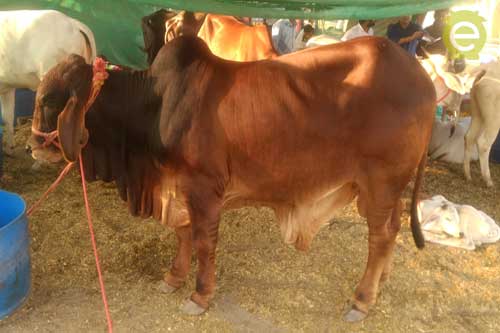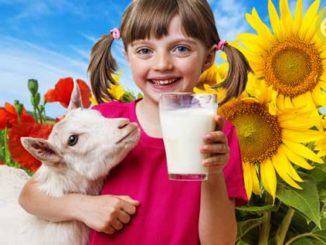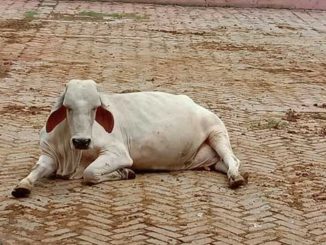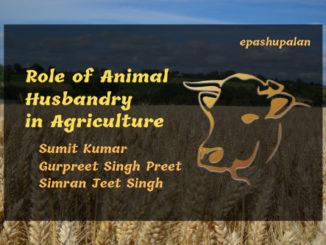India is a country with characteristically rural majority having more than 50% of its population residing in rural areas out of which 70 percent of its rural households depend primarily on agriculture for their livelihood, with 82 percent of farmers being small and marginal. Livestock rearing acts as the financial backbone for these rural farming households because with each passing year, agricultural return is being hardly sustainable, apart from being highly fluctuating.
The livestock sector alone contributes nearly 28.49 % of value of output at current prices of total value of output in agriculture, fishing & forestry sector. The overall contribution of livestock sector in total Gross Domestic Product (GDP) is nearly 4.9 % at current prices during 2017-18. The Indian dairy sector is the largest contributor to the agriculture GDP. In terms of output, milk is now the single largest agricultural commodity in India. . Globally India stands first in milk production with 187.75 million tons milk production annually and per capita milk availability is 394 grams per day (2018-19). The annual growth of milk production from the year 2013-14 till year 2018-19, shows a steady increase with a growth of 6.5% from previous year (BAHS-2019). The success of dairy sector depends on regular production of milk, which further depends upon the maintenance of production cycle.

For increasing milk production, a comprehensive breeding program, through which proper utilization of these animal resources could be done, is necessary. For an extensive and effective breeding programme, knowledge about various phenotypic and genetic parameters related to production traits should be accumulated. The selection in female has limited scope due to restriction of limited replacement stock. With respect to genetic gain, contribution of sires is more than that of dams, so selection of sire is more important. It becomes important to identify a perfect sire to become parent in next generation and its maximum utilization for purpose of breeding. For effective sire selection, producers must not only be well familiar in the use of expected progeny differences (EPDs) and understand breed differences, they must accurately and objectively consider the herd’s current genetics, resources and management. Recent advancement in DNA technology and decision-support tools made this process of selection more complex but will ultimately enhance selection accuracy.
Genetic Change
Sire selection provides a great opportunity for making genetic change in the herd. Genetic change can occur both through sire selection and replacement of female in the herd. Culling of animal also play important role in genetic improvement of the herd. Most of the farmers raise their own replacement heifers rather than purchasing from other sources. Which make the process of genetic improvement lengthier as most of herd female remains same due to less no daughters that can replace low producing females of the herd. Depending on rate of culling in the herd, usually 50% or more of the replacement heifer candidates are retained at weaning to allow for further selection at breeding time. So some average heifers will be in that group even if the best half of the heifers are retained.
Whereas selecting sires for natural service or artificial insemination (AI), the amount of variation available are vast. Farmers can find bulls that will increase or decrease nearly any trait of economic importance. Furthermore, since relatively few bulls will service a large number of cows, producers can select bulls that are fairly elite even when using natural mating. Use of AI allows commercial producers to use some of the most outstanding bulls in the world at a reasonable cost, allowing for enormous amounts of genetic change, if desired. Finally, selection of bulls is more accurate than female selection. As more data of daughters of sire are available because a bull can produce many daughter in a year with use of artificial insemination whereas as females have limited number of daughters across different environment and herd. Bulls that are used for artificial insemination are highly proven due to enormous data of daughters.
Permanent Change
With each year passing slight change in season and climate comes along with land nutrients and crop grown on them but the genetic makeup of the individual remains same. The changes in the management of farm are temporary like change in the feed composition of animals and health protocols for various diseases but genetic change is permanent change. However, once a genetic change occurs, that change will remain until new animals carrying additional new genetics enter the herd. Whether selecting for growth, production, carcass traits or maternal performance, those traits are automatically passed on to the next generation once established in the herd. Sire selection has a long-term impact. Whether a selected sire has a favourable or unfavourable effect on the herd, if his daughters enter the herd, his effects will remain for a considerable period of time. Assuming a sire is used for four years and his daughters are retained, his impact will easily extend into the next decade. While each generation dilutes his contribution, his granddaughters and great-granddaughters may remain in the herd a quarter century after last sired calves.
Selection Criteria
In India, a large group of farmers uses bulls for natural services purpose and in rural areas bulls of different villages are exchange on a periodic basis. So these are the points that should be taken care while selecting a bull for natural service or artificial insemination purpose:
- Bull should be true to its breed characters. In case of crossbreeding, for plain areas Holstein Friesian and in hilly areas Jersey breed should be used.
- Select the bull having previous history of healthy and high yielding daughters.
- Bull should be free from any physical deformities and diseases like Thieleria, BVD TB, IBR, EBL and Johne’s disease.
- Bull should be fully vaccinated for leptospirosis and BVD. They must have been vaccinated twice initially, 4 weeks apart and then boosted with a single shot annually for each of these diseases.
- Use bulls that are no more than 3 years old. Older bulls can be temperamental, difficult to manage and are more likely to have injuries to the penis, back or legs. They increase the risk of injury to both the cattle and to the people working with them.
- Choose virgin bulls whenever possible as they are less likely to introduce venereal diseases to the herd; but avoid using bulls that are less than 15 months old.
- Use bulls that are likely to minimize the number of calving requiring assistance, especially with the heifers.
- Select bulls ideally from the same herd. This will reduce fighting when they are with the herd. Otherwise the bulls need to arrive earlier to establish their social order well before mating start date.
- Exclude fully horned bulls and those with deformed feet as this may lead to injure the bull while service or collection of semen.
- Select bulls of similar size to the cows or heifers to be mated. If bulls are substantially heavier than the cows or heifers (e.g. >100 kg heavier) then injuries to both bulls and cows are more likely.
Care during Mating
Proper care and management should be taken while using a bull for natural service purpose. It will ensure good health of the bull and better quality semen production by the bull. These are some of the important steps that should be taken while using a bull for natural service:
- Regularly observe bulls serving to ensure they are serving correctly. Immediately remove bulls that are unable to serve properly and replace them with more capable bulls.
- Monitor bulls for lameness each day. Remove lame bulls immediately and replace with healthy bulls. If bulls go lame or get sick they will need to be replaced for the rest of mating. Infections, antibiotic treatment, and elevated temperatures effect sperm production for 30+ days making them ineffective for use.
- Do not allow bulls to enter the concrete milking yard with the milking herd as concrete can cause excessive hoof wear and lameness. To further reduce the risk of bull lameness and injury to bulls, cows and farm staff – train bulls to remain in the paddock.
- If applicable, ensure bulls do not gain access to concentrate rations. This can disrupt rumen function, causing sickness and reduced fertility.
- Young bull should be given proper training before using for natural service. For good quality of semen production 2-3 service per week should be taken from the bull.
Conclusion
With increasing world human population day by day, the need of increase in supply of feed is escalating. This need can’t be fulfilled alone by plant origin resources. So animal resources have to be increased but there is limitation of animal fodder. That why per animal productivity is the main aim for every farmer which can be only possible by genetic improvement of herd. Sire selection is the only way to reach this goal of genetic improvement in short duration of time. Sire is key to the future generation of herd. With use of modern reproductive techniques like artificial insemination and sexed semen full utilization of sires can be done.






Be the first to comment